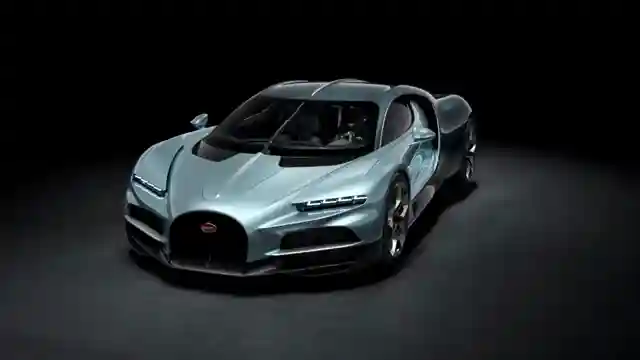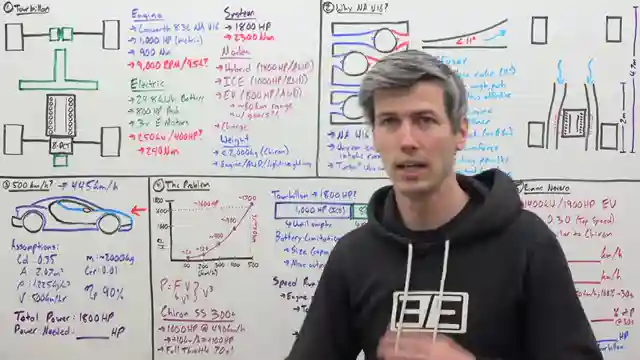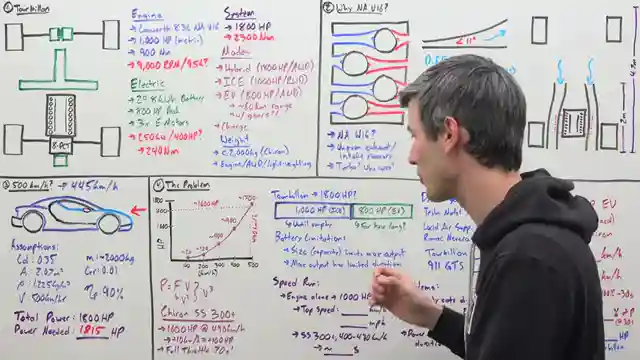Bugatti Torban: Unleashing 1,800 Horsepower and Chasing 500 kmph

- Authors
- Published on
- Published on
- Name
- By Dushyant
- (@dishs)
The Bugatti Torban, a beast of a car with a whopping 1,800 horsepower V16 engine, is making waves in the automotive world. Named after a fancy watch component, this machine is a true marvel of engineering. With a front electric motor, battery pack, and a dual-clutch transmission, the Torban is a powerhouse on wheels. What's impressive is that despite its massive engine and electric components, this car weighs less than 2,000 kg, a remarkable feat by the Bugatti team.
Bugatti's decision to go with a naturally aspirated V16 engine was a bold move, driven by the desire for that iconic engine sound and responsive performance. The choice of a V16 over a W16 was a strategic one, as it allowed for a long diffuser at the back, enhancing downforce without adding drag. The Torban's top speed is limited to 445 kmph, but the real question is, can it push past the 500 kmph mark? Achieving such speeds poses unique challenges, especially considering the aerodynamic drag and limitations of the electric powertrain.
When it comes to high-speed runs, the Torban's 1,800 horsepower may face some hurdles due to battery limitations affecting power output over time. Comparisons with other high-performance EVs like the Rimac Nevera shed light on the Torban's quest for ultimate speed. The Bugatti team's innovative approach to balancing power, weight, and aerodynamics in the Torban showcases their commitment to pushing the boundaries of automotive excellence.

Image copyright Youtube

Image copyright Youtube

Image copyright Youtube

Image copyright Youtube
Watch Bugatti's Giant V16 Engine Is Insane - All The Tourbillon Details! on Youtube
Viewer Reactions for Bugatti's Giant V16 Engine Is Insane - All The Tourbillon Details!
Battery discharge rate is not a rule of thumb, every battery is unique
Rimac achieved 412 km/h with much higher power after prolonged acceleration
Porsche's T-Hybrid battery is rated for "continuous" power at 85%
The Bugatti Tourbillon has a limiter at 445 km/h
The car is RWD in ICE mode, potentially allowing for donuts and slides
Bugatti Tourbillon has immersion cooling for the battery
The power decrease on the Nevera is due to motor BEMF getting close to battery voltage
Bugatti Tourbillon has a skinnier but deeper frunk for aerodynamics
Bugatti Chiron had more drag due to its frontal surface area
Some users express disappointment that the Bugatti Tourbillon is not a monster V16 making more horsepower than the Chiron
Related Articles

Unveiling Corvette ZR1: Acceleration Secrets and Track Dominance
Engineering Explained reveals the Corvette ZR1's astonishing acceleration, custom launch control secrets, hidden red line, and exceptional handling capabilities, showcasing its dominance on the track.

GM Engine Failures: Thicker Oil Solution Revealed
Engineering Explained uncovers GM's engine failures due to manufacturing defects, recommending a switch to thicker oil for optimal engine performance and longevity.

Exclusive Review: Cadillac Celesteic Unveiled - Luxury & Innovation
Experience the Cadillac Celesteic: a $350,000 flagship sedan with 655 hp, 303 mi range, and unique manufacturing techniques like massive aluminum castings and 3D printed metal parts. Discover the luxury of low-volume production and innovative design in this exclusive review.

Revolutionizing Downforce: McMerry Spearling's Impact on Racing
The McMerry Spearling revolutionizes downforce creation with fan technology, showcasing remarkable efficiency and potential for Formula E and Formula 1.
